The world of trees is full of wonders, with some species standing out for their unique characteristics. From vibrant colors to unusual shapes, these trees capture the imagination. Each one tells a story through its distinctive features. This article explores some of the most unusual and fascinating trees found across the globe.
Dragon Blood Tree (Dracaena cinnabari)

The Dragon Blood Tree is native to the Socotra archipelago. Its umbrella-like canopy provides a striking silhouette against the landscape. The tree’s name comes from its red sap, which was historically used as medicine and dye. The branches grow thick and dense, helping to conserve moisture in its arid environment. This unique adaptation allows it to thrive in harsh conditions. The tree’s slow growth rate adds to its mysterious and ancient appearance.
Baobab Tree (Adansonia digitata)
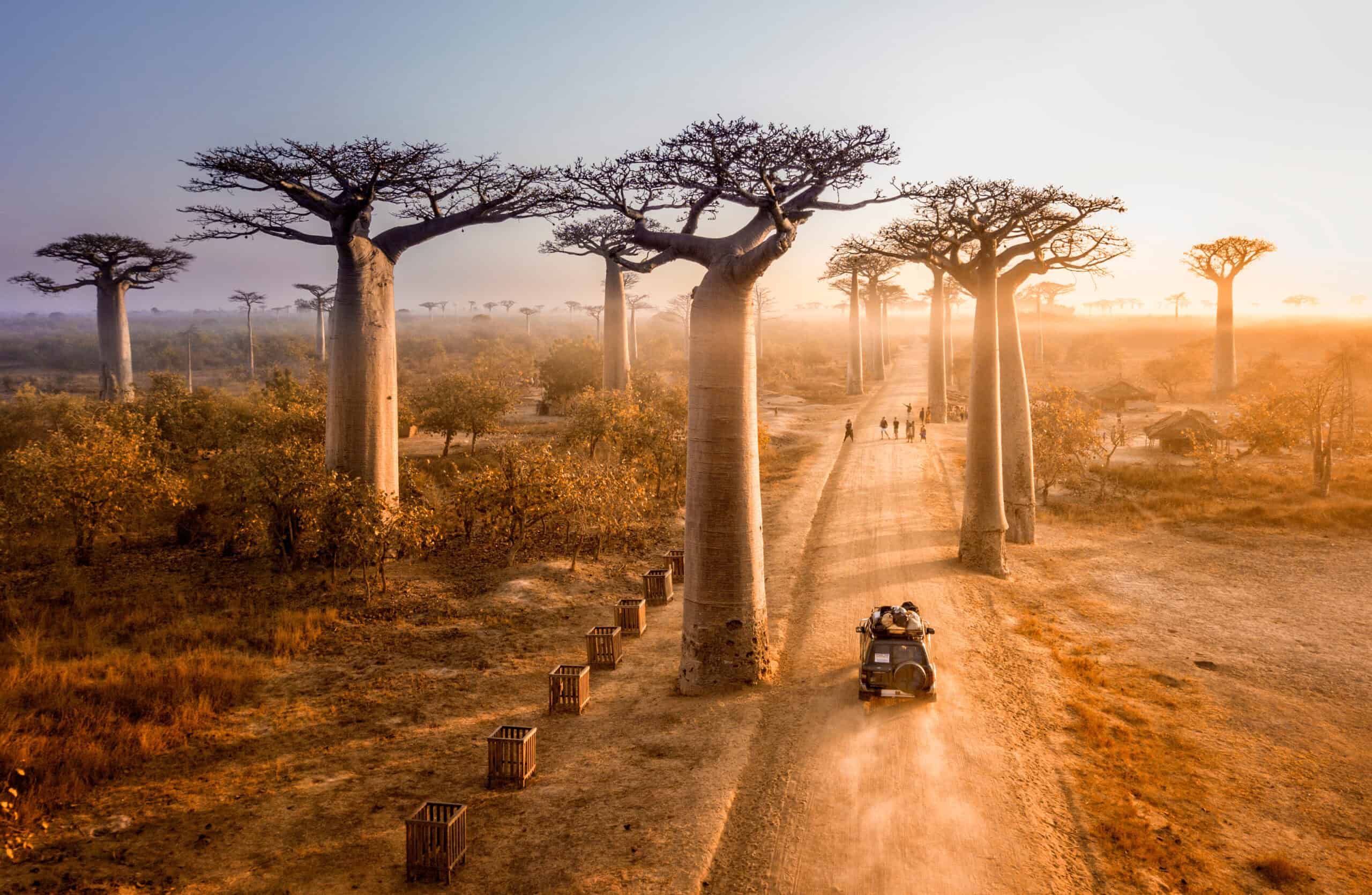
The Baobab Tree is often referred to as the “Tree of Life.” It stores water in its massive trunk, enabling it to survive in dry climates. The trunk can grow to impressive diameters, sometimes reaching over 30 feet. During the dry season, the tree sheds its leaves, leaving a bare trunk that resembles roots sticking up into the air. This unusual appearance has earned it the nickname “upside-down tree.” The Baobab can live for thousands of years, making it a true survivor in the natural world.
Boojum Tree (Fouquieria columnaris)
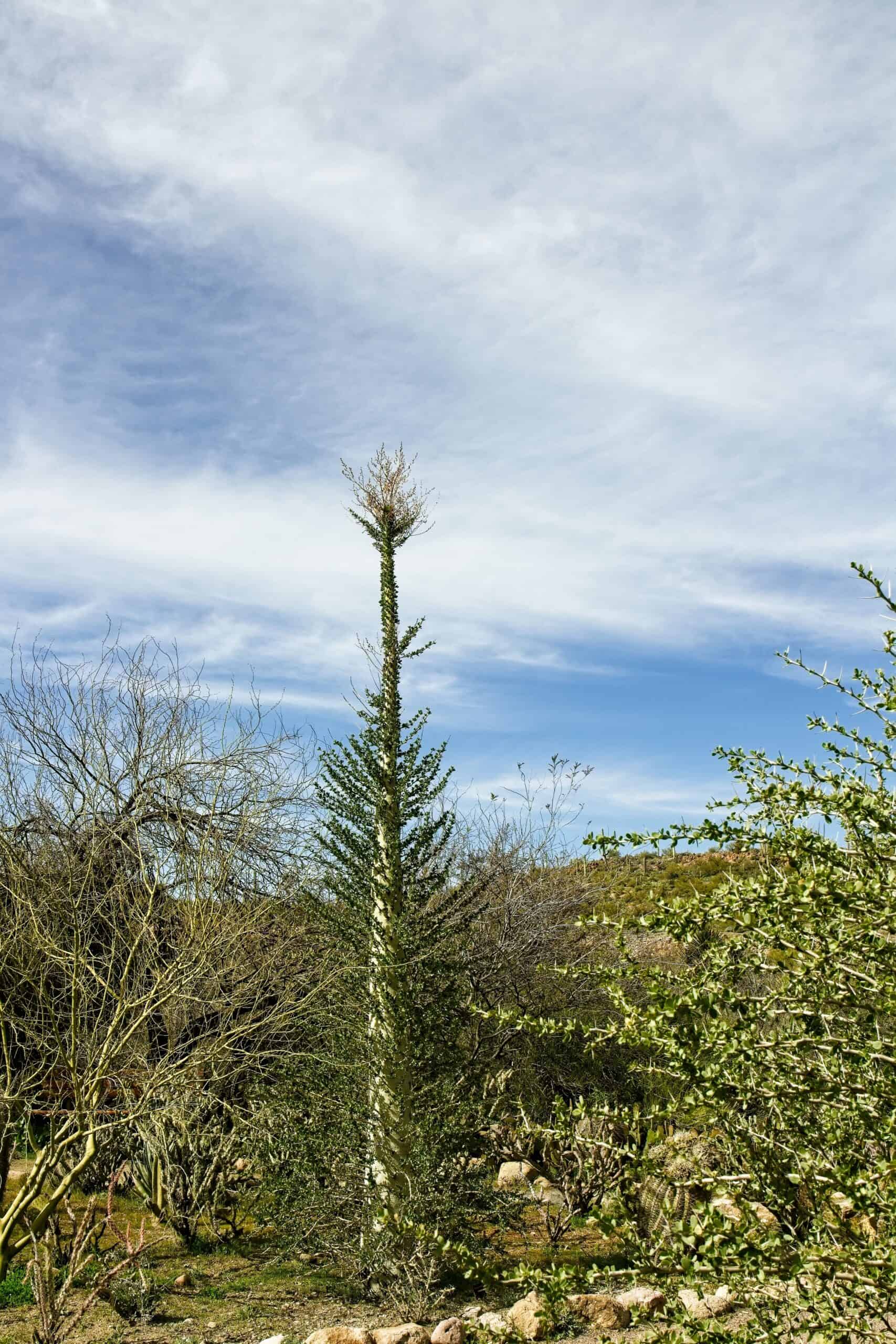
The Boojum Tree is native to the Baja California Peninsula and Sonoran Desert. It has a tall, spindly trunk that twists and turns as it grows. This tree can reach heights of up to 70 feet, yet it remains narrow and unbranched for most of its length. The Boojum Tree’s strange appearance has fascinated botanists and nature enthusiasts alike. Its name comes from a mythical creature in Lewis Carroll’s poem “The Hunting of the Snark.” This name reflects the tree’s otherworldly presence in the desert landscape.
Rainbow Eucalyptus (Eucalyptus deglupta)
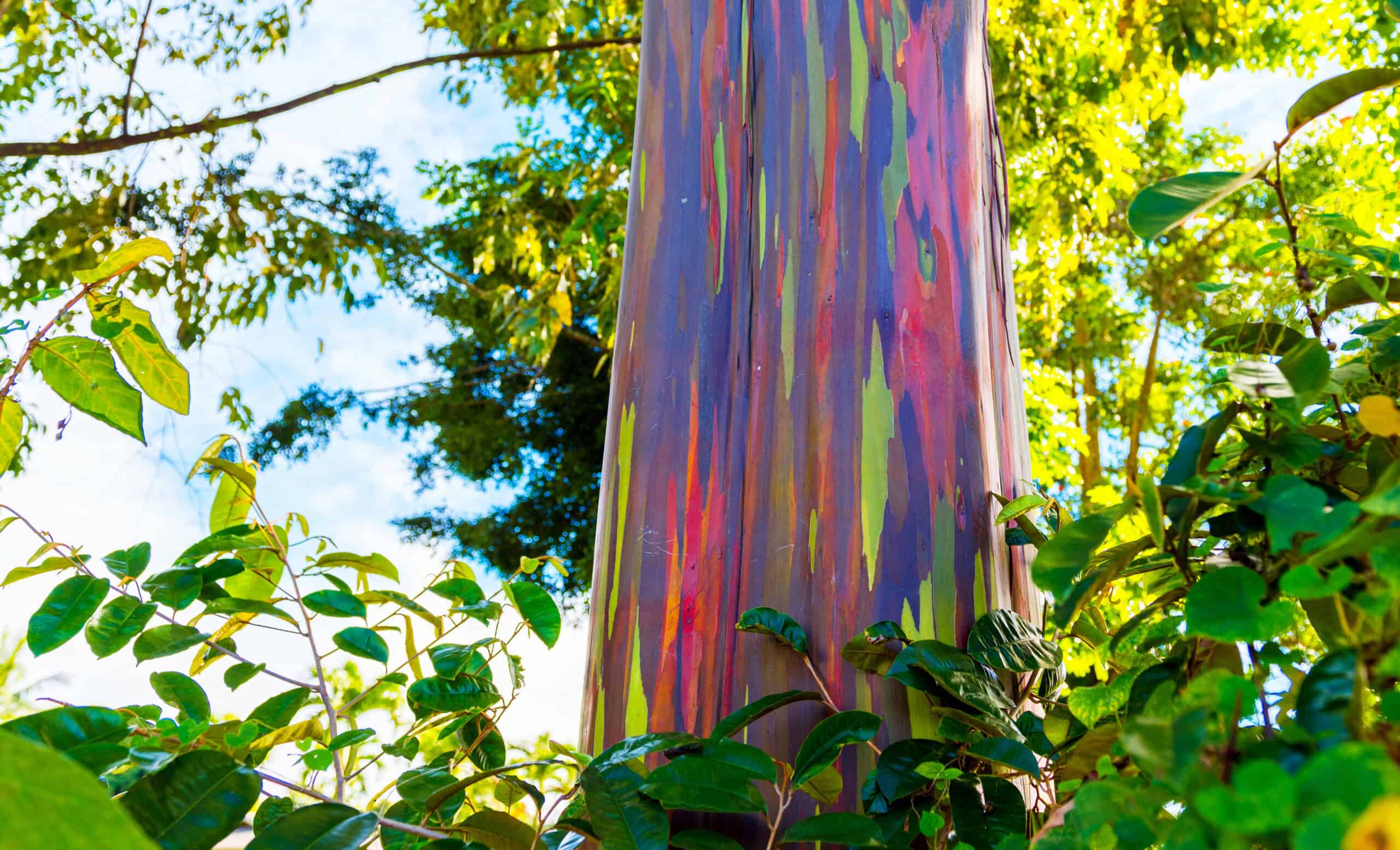
The Rainbow Eucalyptus is famous for its vibrant, multi-colored bark. As the bark sheds, it reveals bright streaks of green, blue, purple, orange, and maroon. This stunning display makes the tree one of the most colorful in the world. The tree grows rapidly, often reaching heights of over 200 feet in tropical regions. Its smooth trunk is a canvas of ever-changing colors, creating a living work of art. Native to the Philippines and surrounding areas, it thrives in warm, humid environments.
Wollemi Pine (Wollemia nobilis)
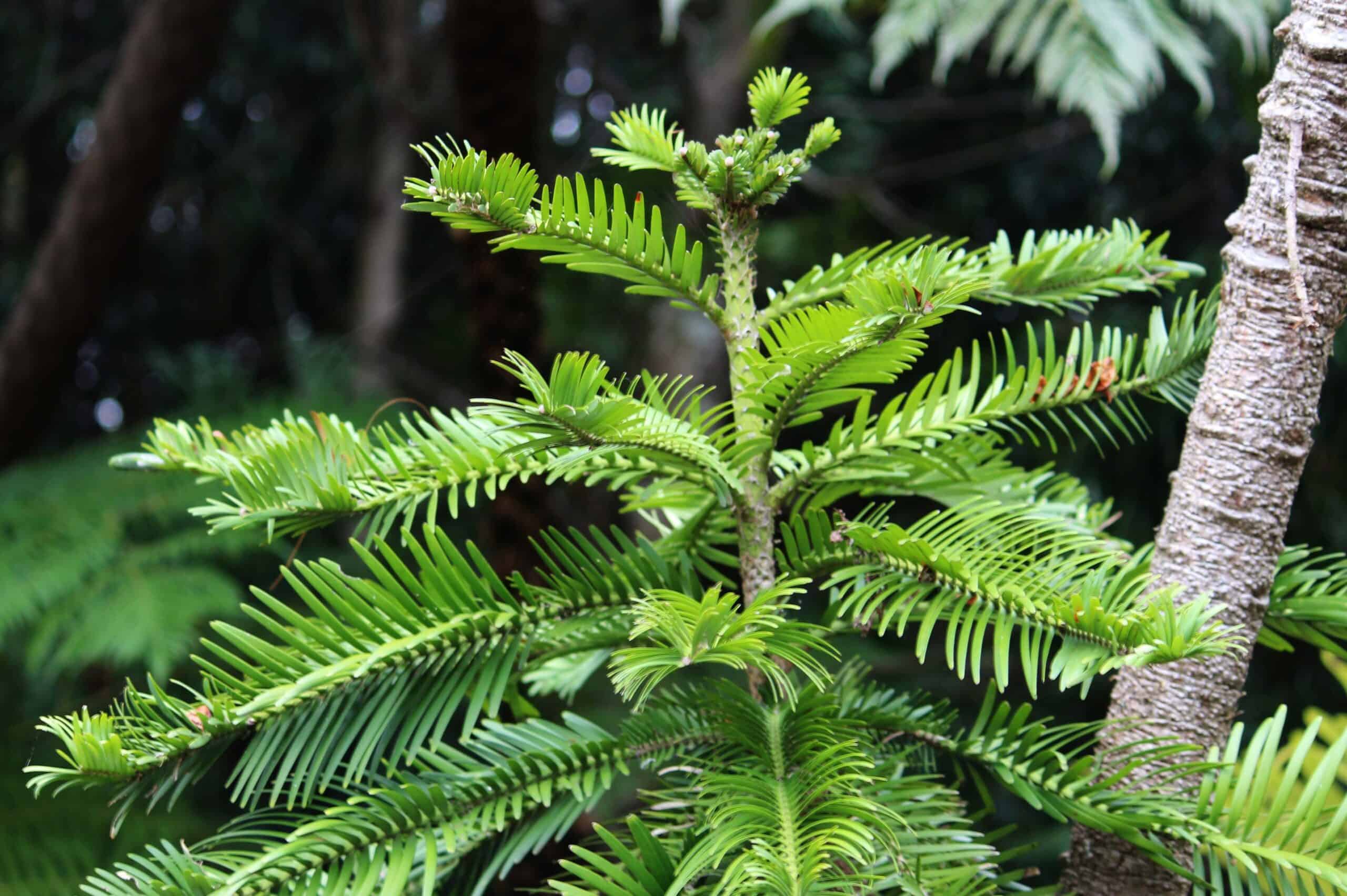
The Wollemi Pine is a living fossil, dating back to the time of the dinosaurs. It was thought to be extinct until its rediscovery in 1994 in a remote Australian canyon. The tree has a unique, bubbly bark texture and produces strange, knobby cones. With fewer than 100 mature individuals left in the wild, it is one of the rarest trees on Earth. The Wollemi Pine’s resilience in surviving millions of years is a testament to its adaptability. Its discovery has sparked great interest in the botanical world.
Monkey Puzzle Tree (Araucaria araucana)

The Monkey Puzzle Tree is native to Chile and Argentina. Its distinctive, spiky branches grow in a spiral pattern, making it difficult for monkeys to climb, hence the name. The tree can live for over a thousand years, with some reaching heights of up to 150 feet. Its dark green, tough leaves give it an armored appearance, providing protection from herbivores. The tree’s prehistoric origins are evident in its unusual form, making it a living relic from the time of the dinosaurs.
Banyan Tree (Ficus benghalensis)
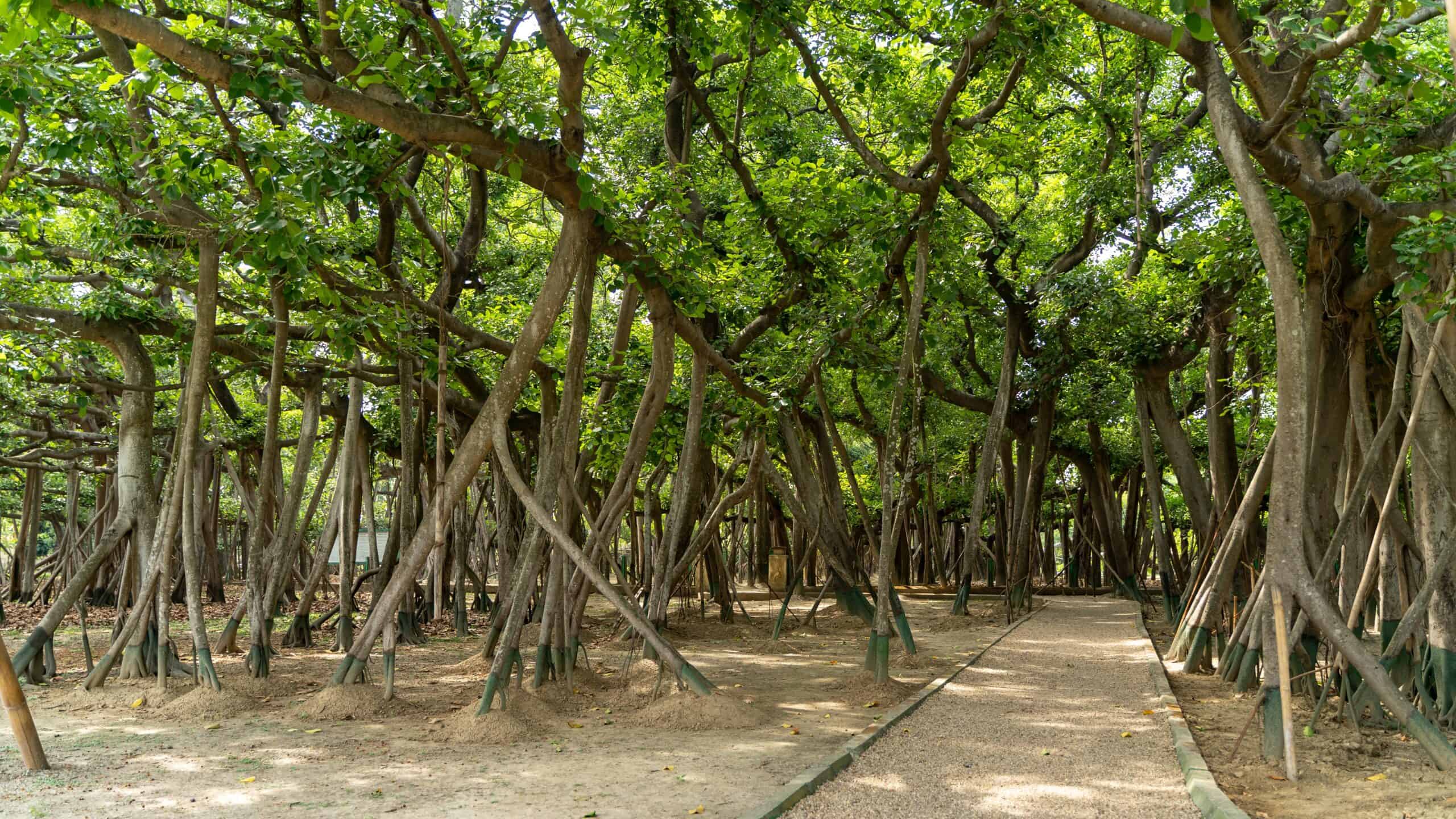
The Banyan Tree is known for its extensive network of aerial roots. These roots grow down from the branches and take root in the ground, forming additional trunks. This process allows a single tree to cover a vast area, creating a natural shelter. Some Banyan Trees spread over several acres, providing shade and refuge for many creatures. The tree’s complex structure makes it a symbol of immortality and strength in various cultures. Its ability to grow and thrive across large areas is truly remarkable.
Bottle Tree (Brachychiton rupestris)
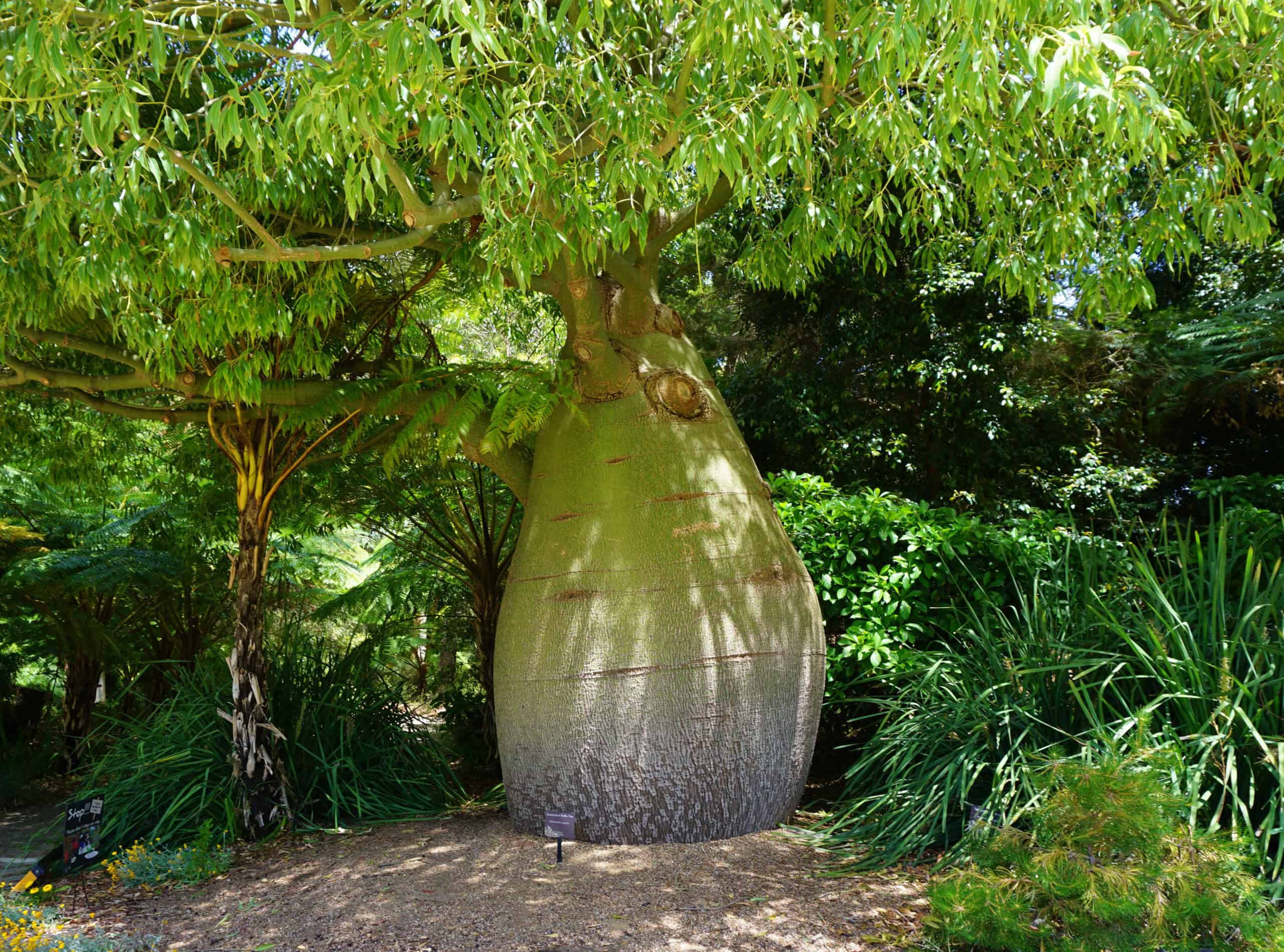
The Bottle Tree is native to Australia and is named for its bulbous, bottle-shaped trunk. This unique shape allows the tree to store large amounts of water, making it well-suited for arid conditions. The trunk can swell to impressive sizes, depending on the water availability. The tree’s bark is smooth and gray, with sparse branches that extend from the top. The Bottle Tree’s ability to survive in harsh environments is a testament to its remarkable adaptations.
Jabuticaba Tree (Plinia cauliflora)
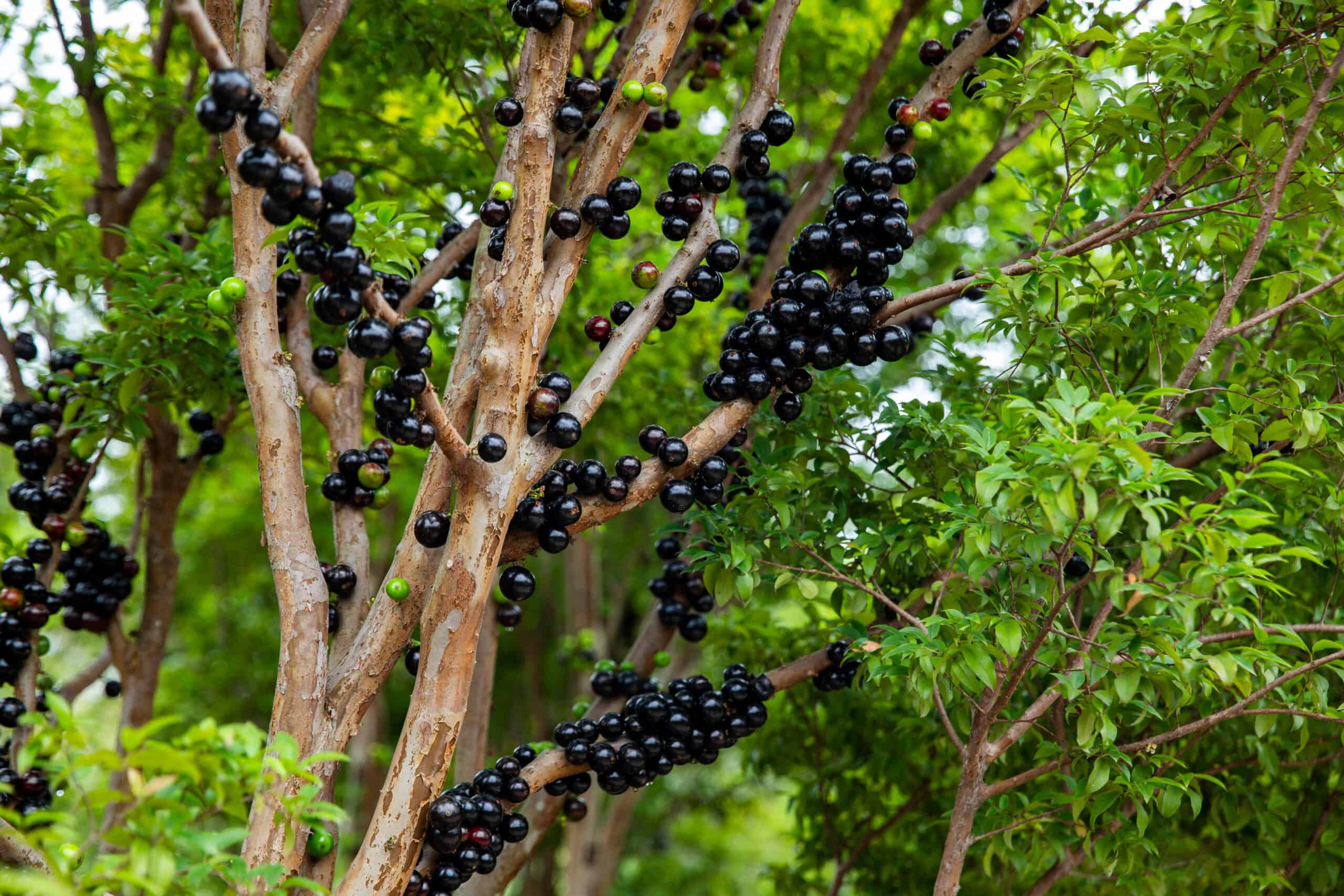
The Jabuticaba Tree is native to Brazil and is known for its unusual fruiting habit. The tree’s dark, grape-like fruits grow directly on its trunk and branches, creating a striking visual effect. The fruit is sweet and juicy, often used in jams, wines, and liqueurs. The tree blooms several times a year, offering a continuous supply of fruit. Its unique appearance and delicious fruit make the Jabuticaba a favorite in tropical gardens. The tree’s ability to produce fruit on its trunk is a rare and fascinating feature.
Ghost Tree (Davidia involucrata)
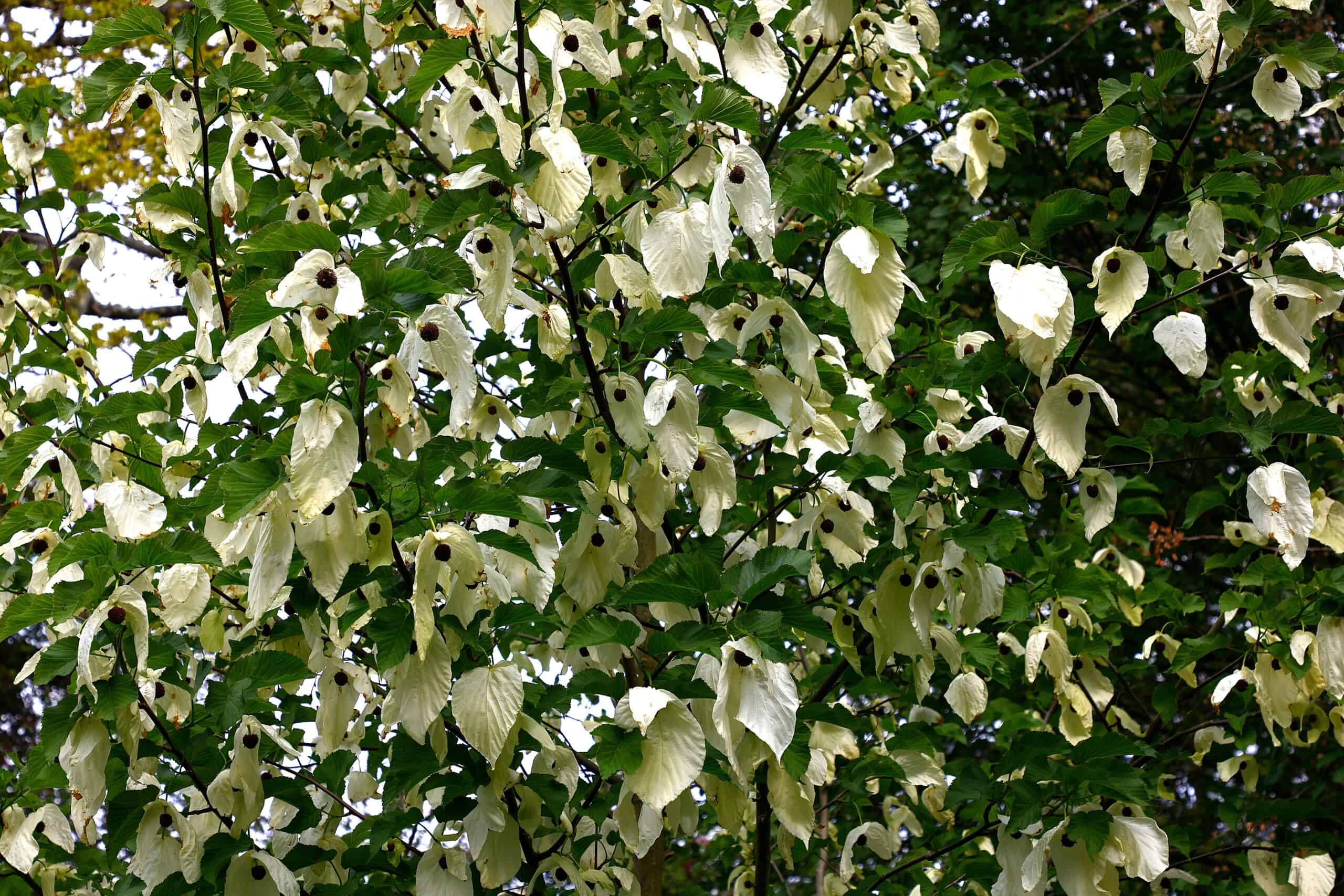
The Ghost Tree, also known as the Handkerchief Tree, is famous for its striking white bracts. These bracts hang down like ghostly handkerchiefs, giving the tree its eerie name. In spring, the tree produces small flowers surrounded by these large, white bracts, creating a captivating display. Native to China, it prefers cool, mountainous regions. The tree’s broad leaves turn a beautiful yellow in autumn, adding to its seasonal charm. Its unusual appearance has made it a popular ornamental tree in gardens around the world.
Cannonball Tree (Couroupita guianensis)

The Cannonball Tree is named for its large, spherical fruits that resemble cannonballs. These fruits can grow up to 25 cm in diameter and hang directly from the trunk. The tree also produces vibrant, fragrant flowers with a unique, curved stamen structure. Native to tropical regions of South America, it thrives in humid environments. The tree’s fruit is heavy and dangerous if it falls, so caution is needed around mature trees. Its combination of unusual fruit and beautiful flowers makes it a striking sight.
Quiver Tree (Aloidendron dichotomum)
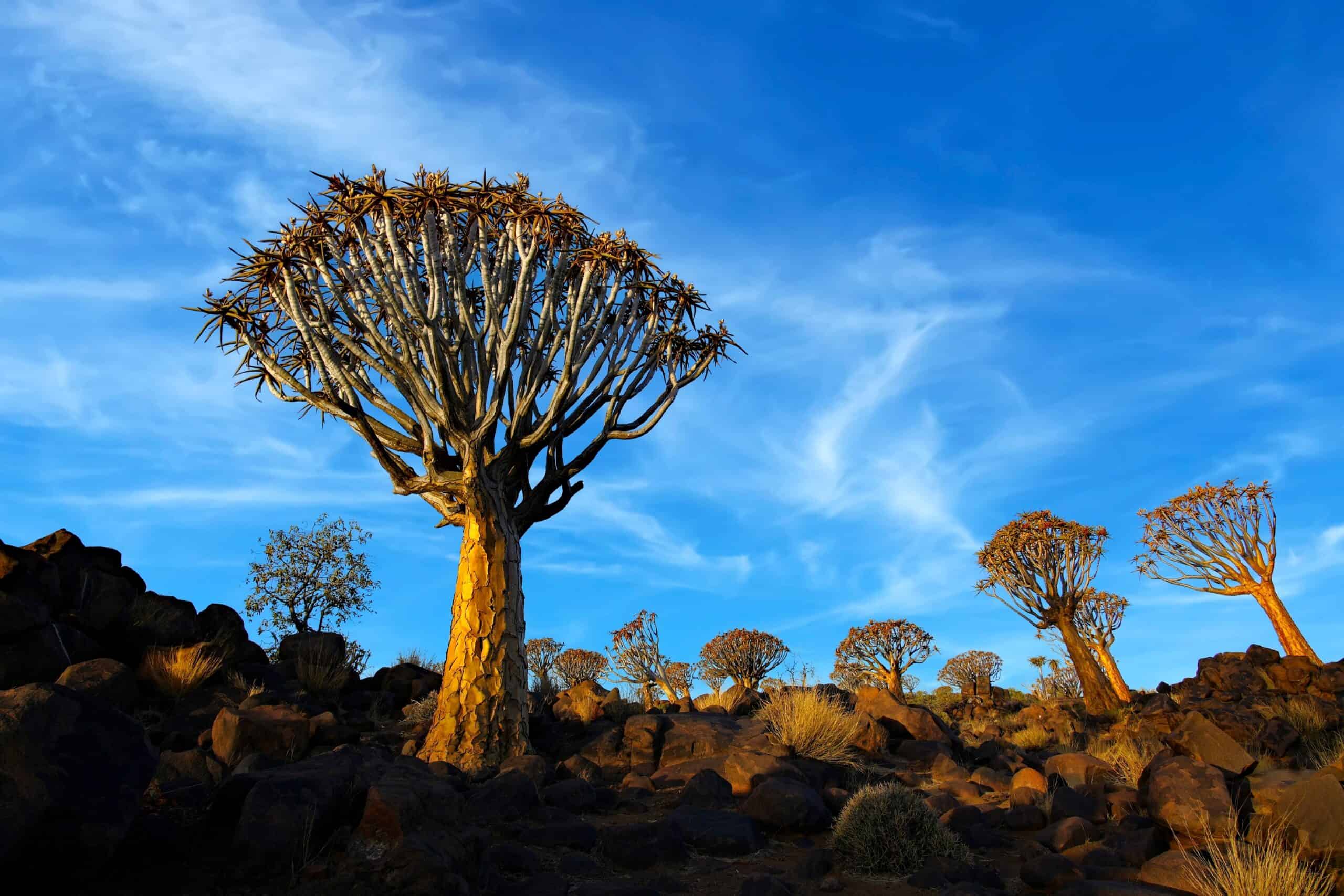
The Quiver Tree is an iconic species of the arid regions of southern Africa. It gets its name from the San people, who used the tree’s hollowed branches to make quivers for their arrows. The tree has a tall, thick trunk and branches that end in dense clusters of spiky leaves. It thrives in hot, dry climates, storing water in its succulent leaves to survive long periods of drought. The Quiver Tree’s yellow flowers bloom in winter, providing a rare burst of color in its harsh environment.
Socotra Cucumber Tree (Dendrosicyos socotranus)

The Socotra Cucumber Tree is native to the isolated Socotra archipelago in the Arabian Sea. This tree has a bulbous trunk that stores water, allowing it to survive in the harsh, arid climate. The tree’s branches are thin and spindly, covered with small, green leaves. It produces small, yellow flowers and cucumber-like fruits, giving it its name. The tree’s unusual appearance and adaptation to extreme conditions make it a symbol of the unique biodiversity of Socotra. Its ability to thrive in such a remote and inhospitable environment is truly remarkable.
Living Fossil Tree (Ginkgo biloba)
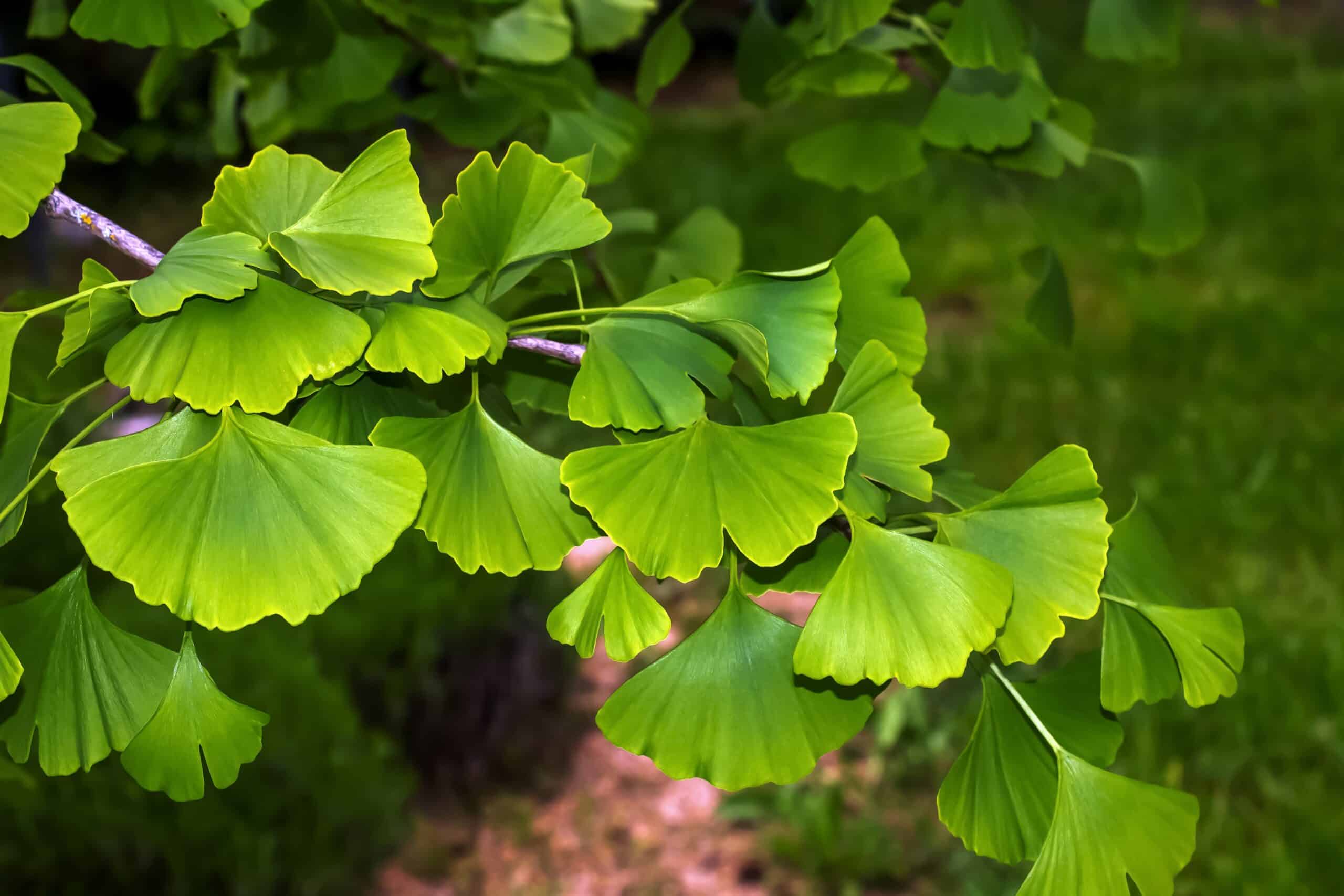
The Ginkgo Tree is often referred to as a living fossil because it has remained unchanged for over 200 million years. Its fan-shaped leaves are unique among trees and turn a brilliant yellow in autumn. Native to China, the Ginkgo is highly resilient and can thrive in various climates. The tree produces a foul-smelling fruit, which is often avoided, but the seeds inside are a delicacy in some cultures. Its long history and distinctive leaves make the Ginkgo a fascinating link to the ancient past.
Japanese Maple (Acer palmatum)
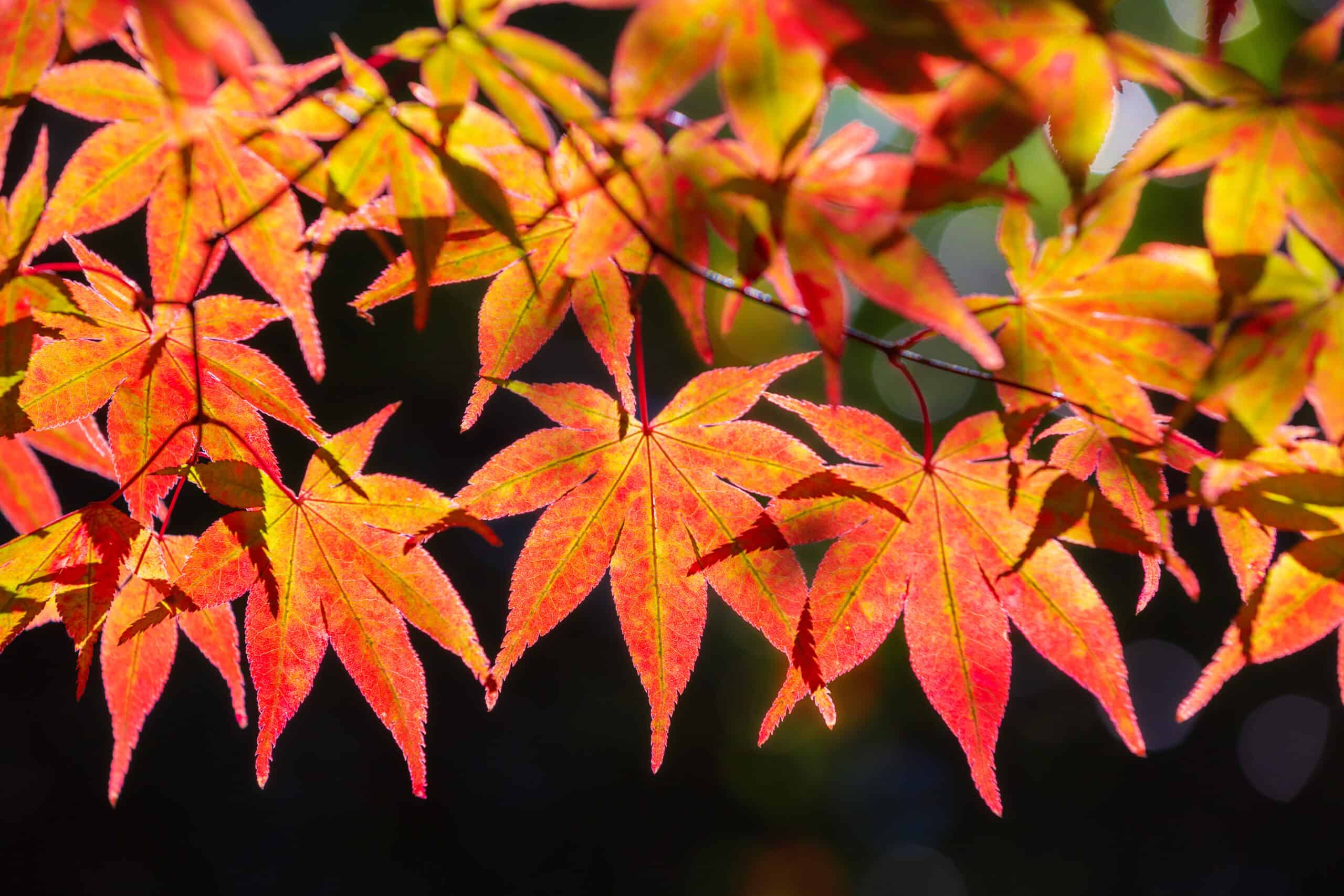
The Japanese Maple is celebrated for its delicate, finely cut leaves and brilliant seasonal colors. It comes in various forms, from small shrubs to medium-sized trees, with leaves ranging from green to deep red. In autumn, the leaves turn vibrant shades of orange, red, and yellow, creating a stunning display. Native to Japan, Korea, and China, it is a popular ornamental tree in gardens worldwide. The Japanese Maple’s graceful shape and vivid colors have made it a symbol of beauty and tranquility in horticulture.
Cork Oak (Quercus suber)
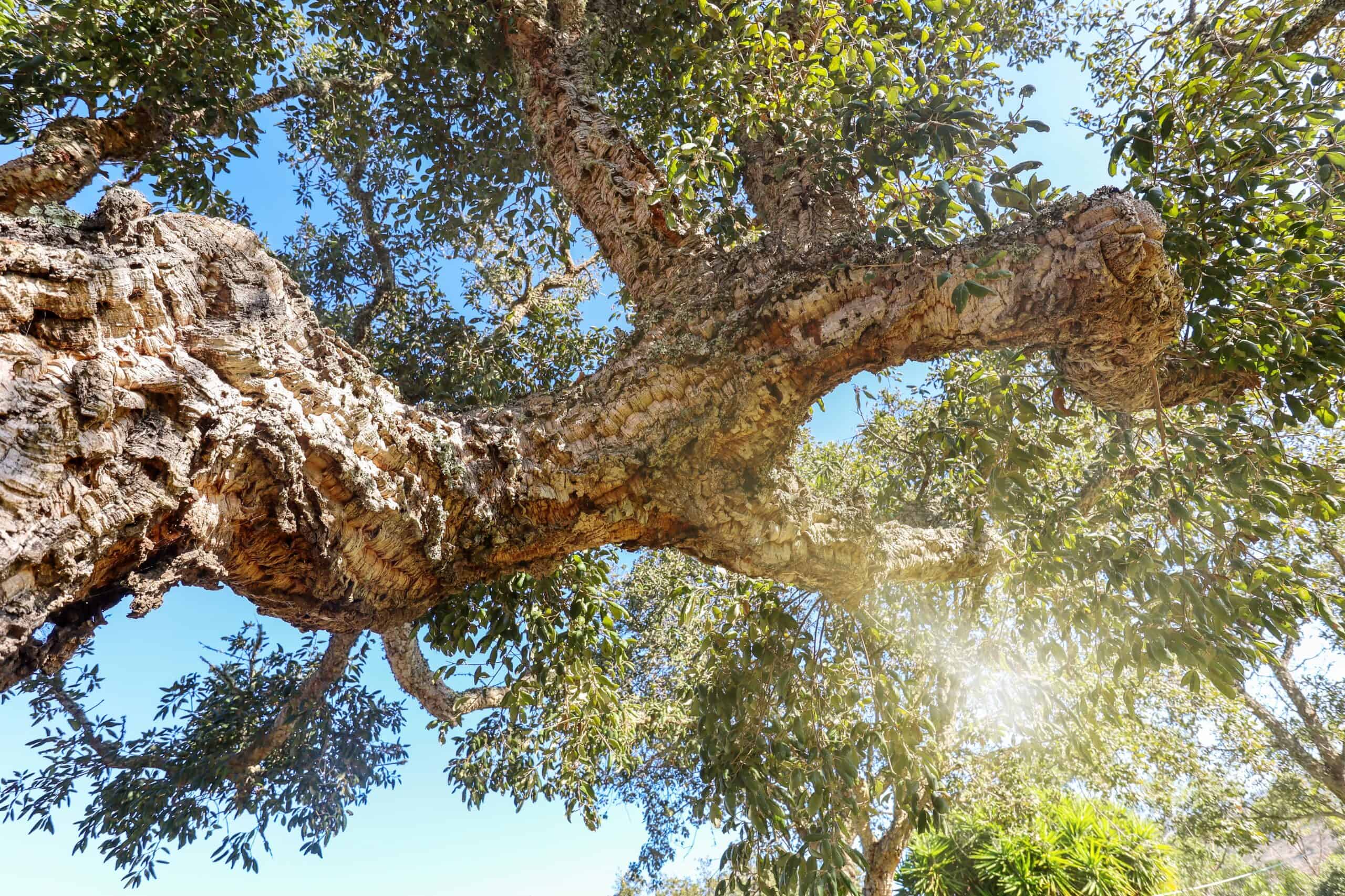
The Cork Oak is the primary source of cork, used for making wine stoppers, flooring, and other products. Its thick, rugged bark can be harvested without harming the tree, making it a renewable resource. The tree is native to the western Mediterranean region, thriving in its warm, dry climate. Cork Oaks can live for over 200 years, producing a new layer of cork every decade. The tree’s resilience and economic importance have made it a vital part of the ecosystems where it grows.
Elephant Tree (Bursera microphylla)
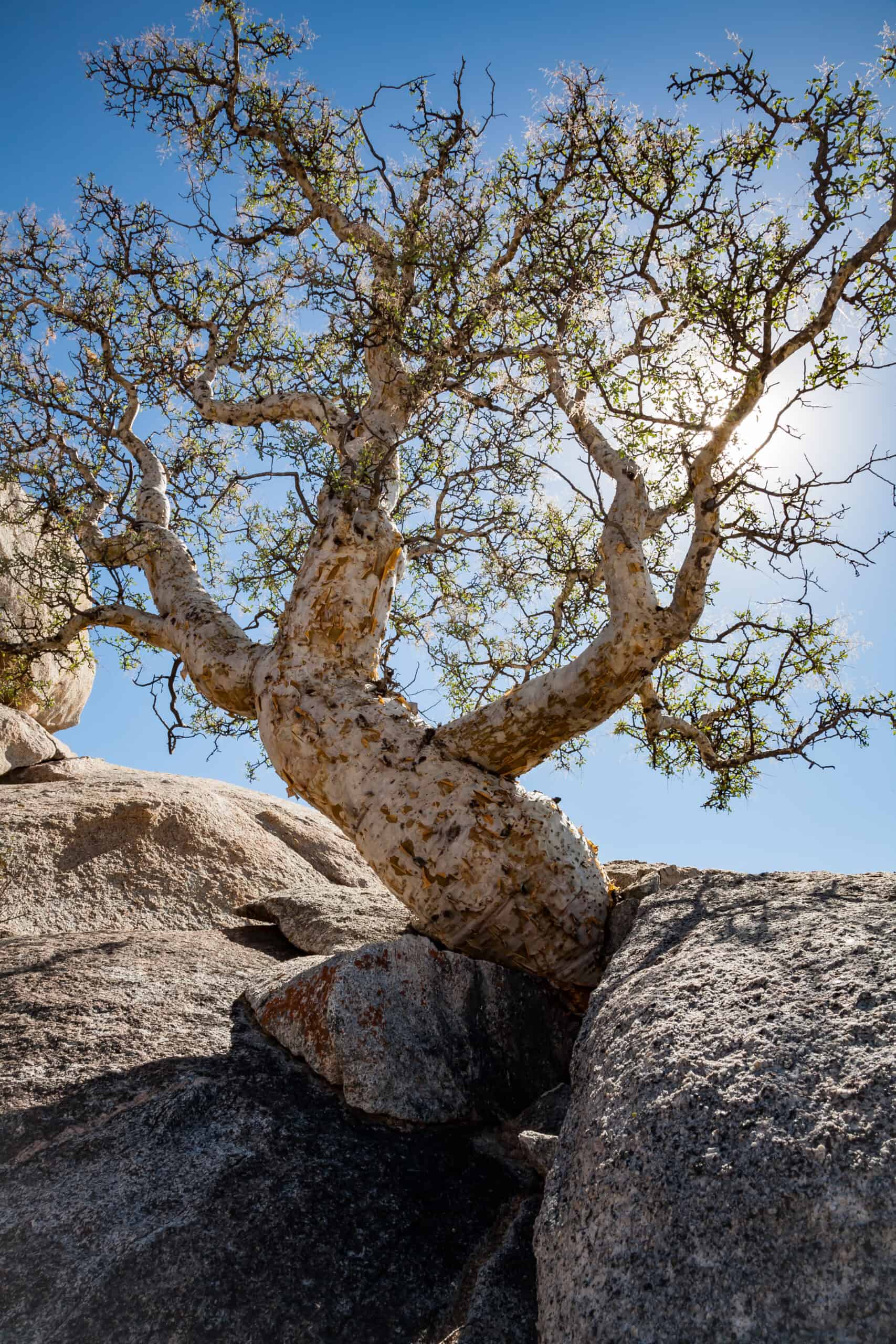
The Elephant Tree is native to the deserts of the southwestern United States and Mexico. It gets its name from its thick, gray trunk, which resembles the skin of an elephant. The tree has small, bright green leaves and produces tiny, fragrant flowers. It stores water in its trunk and branches, allowing it to survive in extreme desert conditions. The Elephant Tree’s unusual appearance and survival strategies make it a unique and fascinating part of desert ecosystems.
Bristlecone Pine (Pinus longaeva)
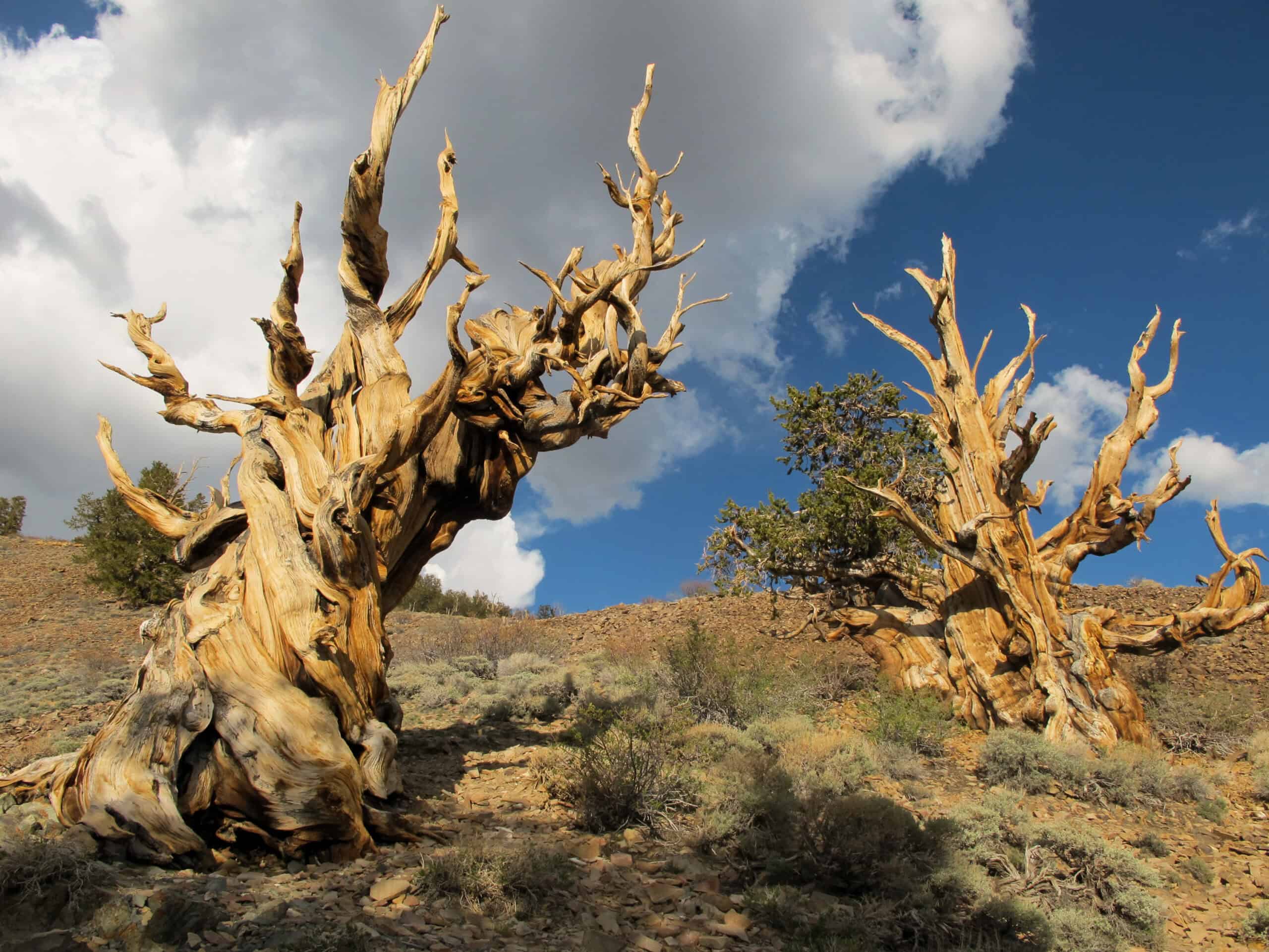
The Bristlecone Pine is one of the oldest living trees on Earth, with some individuals over 5,000 years old. It grows in the high mountains of the western United States, where harsh conditions contribute to its longevity. The tree has twisted, gnarled branches and thick, resinous bark that protects it from insects and disease. Its needles are long and dense, adapted to conserve water in its dry, cold environment. The Bristlecone Pine’s remarkable age and resilience make it a symbol of endurance in nature.
This article originally appeared on Rarest.org.
More from Rarest.org
1939 Mercury Dime Value Guide
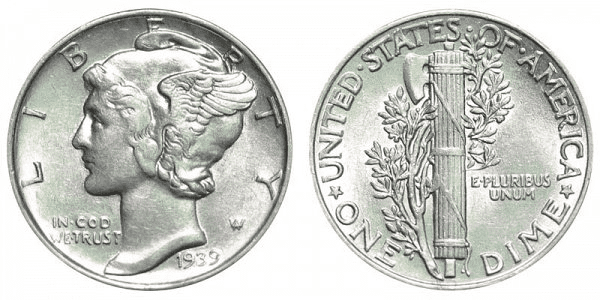
Despite its small size, the Winged Liberty Head dime, more commonly known as the Mercury dime, might be the most attractive coin the US Mint has ever made. Read More.
1941 Lincoln Penny Value Guide

The 1941 Lincoln Penny is a one-cent coin having a face value of $0.01. The penny is made of 95% copper and 5% tin and zinc mixture. Read More.
20 Animals Saved by Captive Breeding Programs
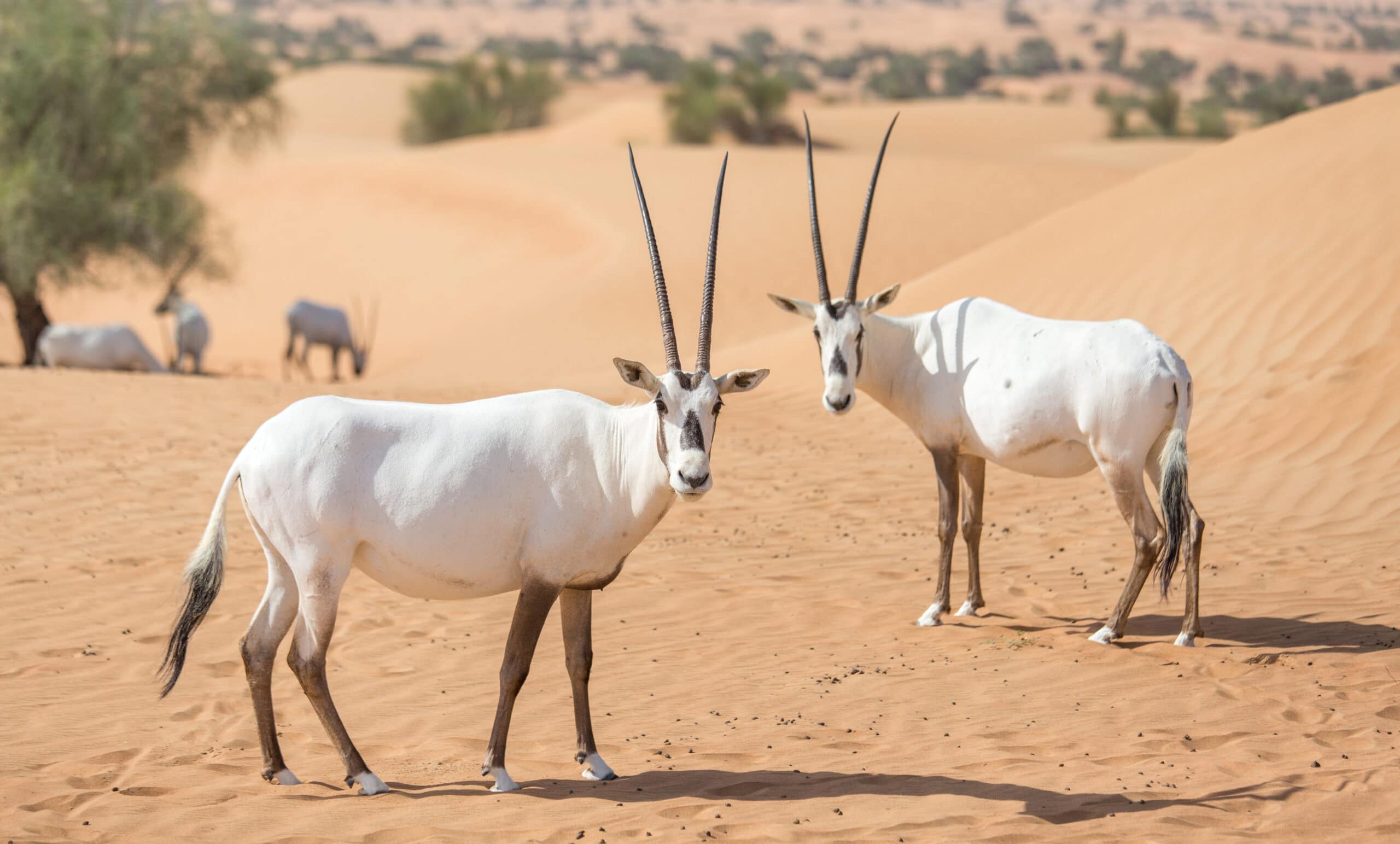
Captive breeding programs have played a crucial role in saving some of the world’s most endangered species from extinction. Read More.
